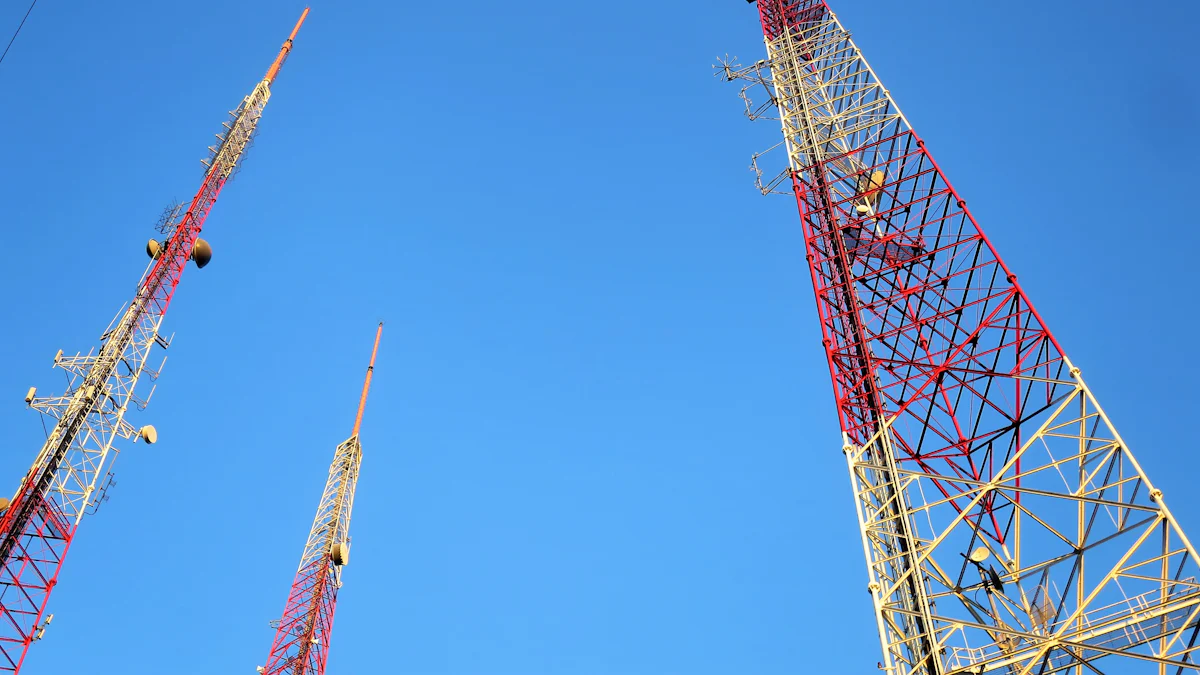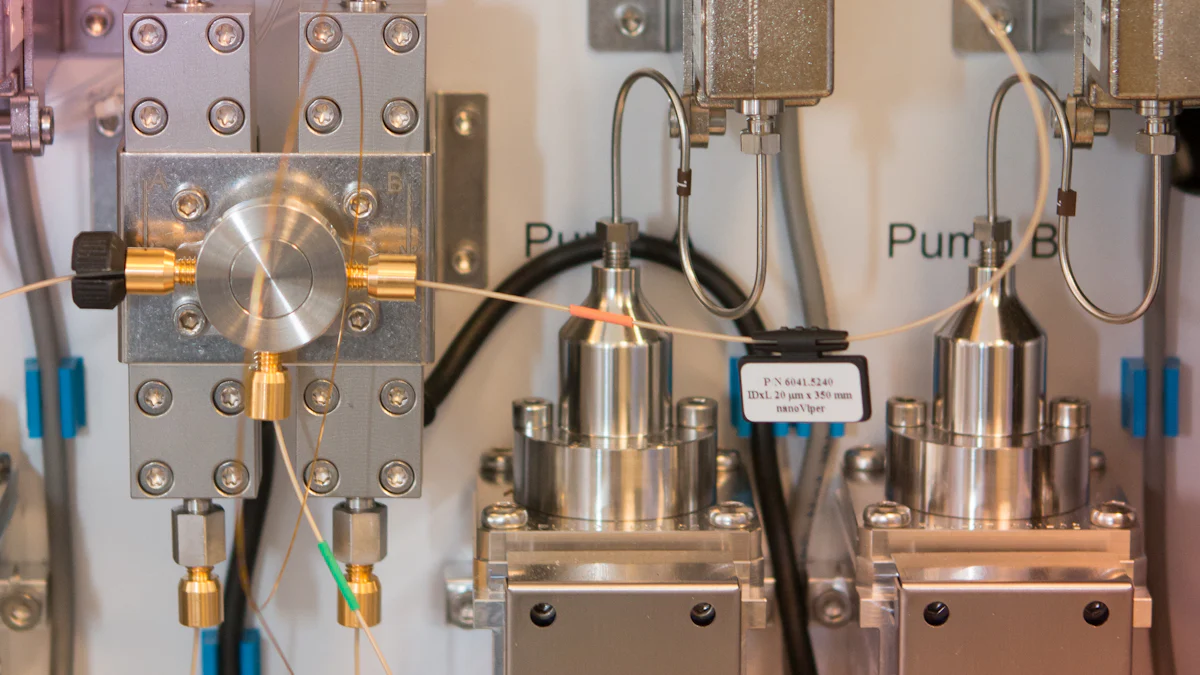How Telecom Rectifiers Enhance Your Network

Telecom rectifiers play a crucial role in modern communication systems. These devices convert alternating current (AC) into direct current (DC), ensuring efficient power delivery. High efficiency in telecom rectifiers minimizes energy loss, reducing operational costs and environmental impact. The importance of telecom rectifiers in networks cannot be overstated, as they provide stable power to critical infrastructure like base stations and data centers.
Understanding Telecom Rectifiers
Basic Functionality
AC to DC Conversion
Telecom rectifiers perform a critical function by converting alternating current (AC) into direct current (DC). This conversion is essential for powering telecommunications equipment, which requires DC power for optimal performance. The process involves using diodes to allow current to flow in only one direction, effectively transforming AC into DC. This conversion ensures that communication systems receive a stable and consistent power supply.
Importance in Power Supply
The role of telecom rectifiers extends beyond simple conversion. These devices provide a reliable power supply to communication networks. Stable power is crucial for maintaining the functionality of base stations and data centers. Telecom rectifiers ensure that these systems operate without interruption, even during power fluctuations. This reliability supports continuous communication services, which are vital in today's interconnected world.
Technical Specifications
Voltage Range
Telecom rectifiers typically operate within a voltage range of 48V to 60V DC. This range is standard for traditional telecommunications equipment. The specific voltage requirements depend on the type of equipment being powered. For instance, 48V 60A Telecom Rectifiers are suitable for small program-controlled switches and access networks. This adaptability makes telecom rectifiers versatile for various applications in the communication industry.
Efficiency Metrics
Efficiency is a key metric for evaluating telecom rectifiers. High-efficiency rectifiers minimize energy loss during the AC to DC conversion process. Companies like Unipower and Huawei offer equipment with efficiency ratings up to 96%. This high efficiency means that only about 4% of the power is lost during conversion. Efficient rectifiers reduce operational costs and lower environmental impact by conserving energy. This efficiency is crucial for sustainable communication networks.
Components of a Telecom Rectifier System

Rectifier Stage
Function and Design
The rectifier stage serves as the heart of a telecom rectifier system. Engineers design this component to convert alternating current (AC) into direct current (DC). This conversion supports the power needs of telecommunications equipment. The rectifier stage often includes diodes and transformers. These elements ensure efficient power conversion. The design focuses on reliability and efficiency to maintain consistent power supply.
Key Features
Key features of the rectifier stage include high efficiency and robust construction. Manufacturers like Unipower and Huawei achieve efficiency ratings up to 96%. This efficiency reduces energy loss and operational costs. The rectifier stage also offers flexibility in voltage settings. This adaptability meets various telecom network requirements. Engineers prioritize durability to withstand harsh environmental conditions.
DC-to-DC Converter
Purpose and Operation
The DC-to-DC converter plays a crucial role in telecom rectifiers. This component adjusts the DC voltage to match specific equipment needs. The converter ensures that each device receives optimal power levels. This adjustment enhances the performance and lifespan of telecom equipment. The operation involves precise voltage regulation to prevent power fluctuations.
Benefits in Telecom
Telecom networks benefit significantly from DC-to-DC converters. These converters improve energy efficiency within the system. Reduced energy consumption leads to lower operational costs. The converters also enhance the stability of communication signals. Improved signal quality results in clearer communication. The use of DC-to-DC converters supports the transition to advanced networks like 5G.
Battery Backup
Role in Power Stability
Battery backup systems provide essential power stability in telecom rectifiers. These systems offer a reliable power source during outages. Battery backups ensure continuous operation of telecom networks. The role of battery backups becomes critical in maintaining service during emergencies. Consistent power supply prevents disruptions in communication services.
Integration with Rectifiers
Integration of battery backups with telecom rectifiers enhances system resilience. The seamless connection between these components ensures uninterrupted power flow. Battery backups work in harmony with rectifiers to manage power demands. This integration supports the overall efficiency of the telecom network. The combination of rectifiers and battery backups strengthens network reliability.
Advantages of Telecom Rectifiers
Energy Efficiency
Cost Savings
Telecom rectifiers offer significant cost savings for network operators. High-efficiency designs reduce energy consumption, which lowers electricity bills. Companies like ZTE engineer rectifier modules to excel in energy efficiency. This efficiency minimizes power loss during conversion. Operators benefit from reduced operational costs over time.
Environmental Impact
Efficient telecom rectifiers contribute positively to the environment. Lower energy consumption results in decreased carbon emissions. Advanced rectifiers, such as those from ZTE, support sustainable practices. These devices help telecom operators meet environmental goals. The impact extends to global efforts in reducing ecological footprints.
Improved Communication Clarity
Signal Quality
Telecom rectifiers enhance signal quality in communication networks. Consistent DC power prevents disturbances in voice lines. This stability ensures clear communication across various platforms. High-quality signals improve user experience and satisfaction. Networks maintain superior performance with reliable power supply.
Reliability Enhancements
Reliability stands as a crucial advantage of telecom rectifiers. Robust designs ensure continuous operation even during power fluctuations. Battery backups integrated with rectifiers provide additional support. This integration guarantees uninterrupted service during outages. Enhanced reliability strengthens overall network performance.
Applications in Communication Systems

Data Centers
Energy Consumption Impact
Data centers rely heavily on telecom rectifiers for efficient power management. Rectifiers convert AC power to DC, reducing energy waste. High-efficiency designs minimize electricity usage. This reduction lowers operational costs and supports sustainability goals. Energy-efficient rectifiers contribute to a greener environment.
Efficiency Improvements
Telecom rectifiers enhance data center performance. Advanced designs improve power conversion rates. Efficient power supply boosts system reliability. Enhanced reliability ensures uninterrupted data processing. Improved efficiency supports growing data demands.
Mobile Networks
Role in Network Stability
Mobile networks depend on telecom rectifiers for stability. Rectifiers provide consistent DC power to base stations. Stable power supply prevents communication disruptions. Reliable power enhances network uptime. Continuous service ensures user satisfaction.
Performance Benefits
Telecom rectifiers improve mobile network performance. High-quality power supply enhances signal clarity. Clear signals improve call quality and data transmission. Enhanced performance supports advanced technologies like 5G. Reliable power infrastructure strengthens overall network capabilities.
Telecom rectifiers enhance communication networks by providing efficient and stable power. These devices ensure reliable operation in data centers and mobile networks. High efficiency, reaching up to 96%, minimizes energy loss and reduces costs. Telecom rectifiers support the growing demands of 5G infrastructure. Future developments will likely focus on further improving efficiency and integration with advanced technologies. The role of telecom rectifiers remains crucial in modernizing and sustaining communication systems.